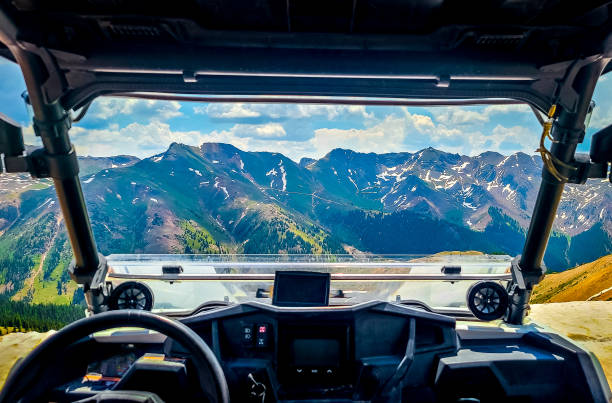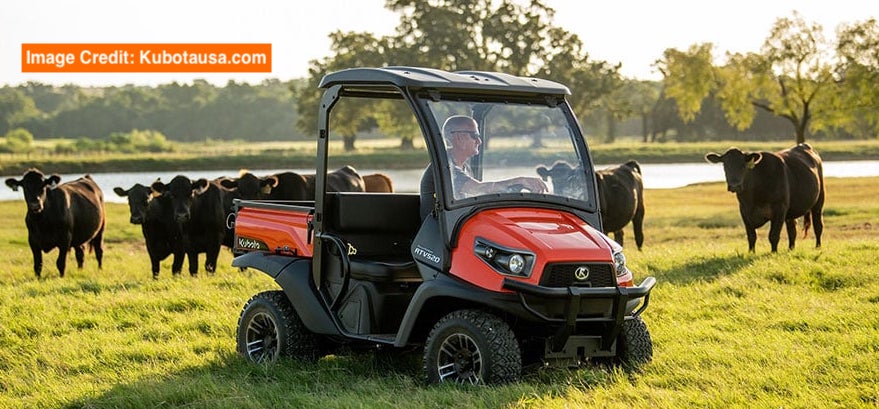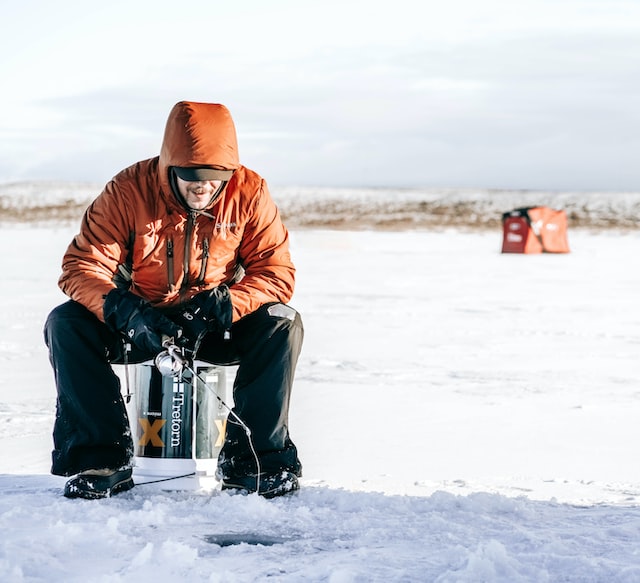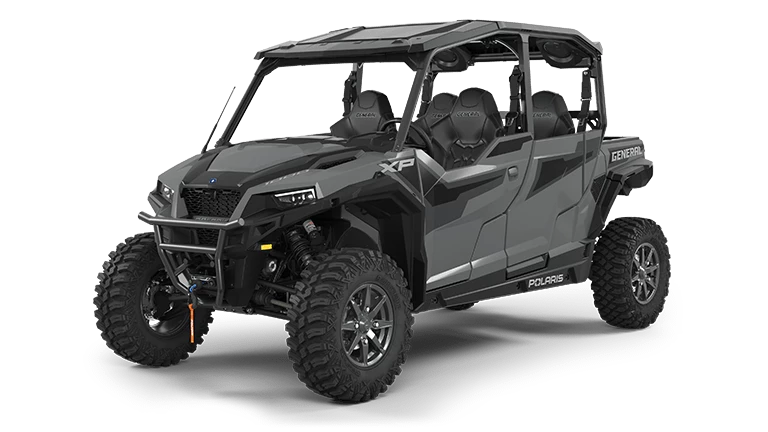As an Amazon Associate I may earn a commission from qualifying purchases at no additional cost to you.
Navigating the world of off-road vehicle insurance can be perplexing, especially when understanding the distinctions between ATVs and side-by-sides.
These vehicles, while both meant for recreation and utility, are governed by different coverage laws that vary significantly across states. The insurance requirements for ATVs and side-by-sides often have unique legal implications that are important for owners to consider.

ATV owners typically encounter regulations that hinge on the use and terrain of where the vehicle is operated. Licensing, registration, and insurance requirements can fluctuate widely, leaving many riders unsure about what compliance truly entails.
Side-by-sides, with their growing popularity, also face distinct legal requirements that may differ from state to state, particularly concerning passenger capacity and safety features.
Understanding the specific insurance mandates for each vehicle is essential for ensuring legal compliance and safeguarding financial well-being. With penalties varying significantly, knowing these differences not only aids in avoiding fines but also ensures a smoother off-road experience.
Understanding Insurance Mandates for ATVs
Insurance mandates for all-terrain vehicles (ATVs) encompass requirements regarding liability coverage, unique distinctions between ATV and side by side vehicle insurance, and necessary documentation such as a certificate of title and registration.
Differentiating ATV and Side by Side Coverage
ATVs and side by side vehicles, also known as UTVs, present specific insurance requirements due to their differing uses and designs. ATVs are generally used for sports and recreation, whereas side by sides serve additional purposes like utility work. Insurance coverage reflects these distinctions.
Understanding the differences ensures that the appropriate coverage is obtained. Considering vehicle type, usage, and local laws is critical for ensuring compliance with insurance mandates. By comparing policy details, individuals can select suitable liability coverage and additional protections.
The Importance of Liability Insurance
Liability insurance for ATVs primarily protects the owner from financial liability in the event of bodily injury or property damage caused while operating the vehicle. This type of insurance is often required by law, especially when ATVs are used on public roadways or when crossing streets.
Having liability insurance ensures protection against costly legal fees and compensation claims. It also offers peace of mind when enjoying off-highway vehicle activities. Without this coverage, owners risk significant financial exposure from accidents.
Evaluating ATV Insurance Coverage Options
Evaluating insurance options involves analyzing different types of coverage available for ATVs, including collision, comprehensive, and medical payments.
Collision insurance covers damage to the vehicle in an accident, regardless of who is at fault. Comprehensive protection includes non-collision incidents such as theft, vandalism, or natural disasters. Medical payment coverage aids in medical expenses resulting from ATV-related accidents.
Comparing premiums, deductibles, and coverage limits ensures the most effective financial protection is selected.
Role of Certificate of Title and Registration
A certificate of title serves as legal proof of ownership for ATVs, which is required for obtaining insurance and registration. Registration is necessary for operating ATVs legally in many areas, especially when using public roads or crossing highways.
This documentation establishes the legal right to use and insure the vehicle, supporting compliance with local regulations. Registering an ATV often involves submitting the title, paying fees, and demonstrating insurance coverage, reinforcing the importance of these documents.
Legal Requirements for Side by Sides
Side by Sides, also known as utility terrain vehicles, have specific legal mandates that regulate their use. These include understanding their classification, mandatory insurance coverage, and registration for use on public lands.
Understanding Side by Side Classification
Side by Sides are typically classified as off-highway vehicles. This classification affects the governing laws and how these vehicles can be used legally.
States may have different criteria to define these vehicles, often based on attributes like weight, size, and seating capacity. In many regions, they are considered a type of motor vehicle, which means they are subject to specific regulations distinct from traditional ATVs.
It’s crucial for owners to check state-specific guidelines to ensure compliance and avoid penalties.
Mandatory Liability Coverage Policies
Liability coverage is a common requirement for Side by Sides. Owners must secure insurance policies to cover potential damage or injury caused while operating these vehicles.
Coverage requirements vary by state, with some mandating minimum liability limits to protect both the operator and others. Insurance policies typically focus on bodily injury and property damage.
Lobby groups and governmental bodies push for such mandates to mitigate financial risks associated with accidents. It is advisable for owners to consult with insurance providers to select appropriate coverage.
Registration and Public Land Use
Registration is often mandatory for operating Side by Sides on public lands. Drivers need to obtain a valid registration sticker or plate from the relevant state authority, which should be displayed prominently.
Registration does not only affirm legality but also ensures proper classification under motor vehicle laws.
In addition to registration, operators may require specific permits to access certain public lands. These permits ensure that the use of off-highway vehicles like Side by Sides complies with environmental and land use regulations. Understanding these legal requirements helps promote responsible and lawful recreation.
Coverage Laws for ATVs on Various Terrains
Legal requirements for ATV insurance can vary significantly depending on where the vehicles are used. Whether on highways or dedicated trails, differing rules outline the necessary coverage.
On-Highway ATV Use and Coverage
ATVs used on highways often face stricter insurance mandates. Coverage laws require owners to ensure their vehicles have adequate liability coverage akin to other motor vehicles.
This may include bodily injury and property damage protection to cover potential accidents involving other motorists.
Certain jurisdictions limit ATV highway use to specific times or types of highways and impose equipment standards like headlights and taillights. Helmet use and age restrictions usually accompany these requirements to enhance safety.
Trails and Off-Highway Vehicle Regulations
ATVs operated on trails or designated off-highway vehicle areas generally have different legal expectations. Some areas may mandate specific liability insurance, especially in regions with heavy ATV traffic. This helps protect trail operators and other users from accident liabilities.
Registration permits for ATVs are often required by local authorities. These permits sometimes necessitate proof of insurance, highlighting the importance of comprehensive coverage even in off-highway contexts.
Safety guidelines, including vehicle maintenance standards, often accompany these laws to reduce the risk of accidents.
Insurance Policy Options and Endorsements

Choosing the right insurance policy choices and endorsements is essential for ATV and Side by Side owners. Key factors to consider include the differences between various coverage types, as well as additional optional coverages for specific needs.
Collision vs. Comprehensive Coverage
Collision coverage applies to accidents where the insured vehicle hits another object or overturns. It covers repair or replacement costs, ensuring that owners can recover financially from a collision incident.
Comprehensive coverage, on the other hand, insures against non-collision-related damage. Physical damage coverage for theft, vandalism, fire, or natural disasters falls under this umbrella.
Both these coverages are vital considerations depending on the owner’s needs and risks faced.
It’s important to assess the specific conditions each vehicle might encounter. Owners should weigh the benefits of each coverage type and tailor their insurance policy accordingly.
Uninsured and Underinsured Motorist Coverage
Uninsured motorist coverage comes into play when an at-fault driver lacks insurance. Conversely, underinsured motorist coverage is crucial when a driver has insufficient insurance to cover damages.
These coverages protect the policyholder in situations where the liable party cannot fully compensate for damages incurred.
Understanding the scope of these coverages ensures that risks from uninsured or underinsured drivers are adequately mitigated.
Optional Coverages: Trailers, Accessories, and More
Policyholders can opt for additional coverages to protect trailers, accessories, and other equipment. These cover damages or theft not included in standard policies.
Custom fittings, modified parts, and accessories often require specialized endorsements. This ensures that add-ons and integral parts are covered to their full value, preventing significant out-of-pocket expenses.
Another consideration is coverage for personal belongings stored in these vehicles. Tailored policies enhance protection by offering coverage options specific to an owner’s individual needs, improving overall security.
Safety Considerations and Legal Compliance

Safety considerations and legal compliance for ATVs and side by sides are crucial for ensuring rider protection and adherence to laws. Key areas include helmet requirements, use of roll cages and seat belts, and standards for turn signals and mirrors. These measures have significant implications for both rider safety and insurance policies.
Helmet and Safety Equipment Laws
Helmet laws vary by state but are vital for the safety of ATV and side by side operators. Many regions mandate helmets, especially for riders under 18. These laws aim to reduce head injuries, which constitute a significant portion of ATV-related accidents.
Safety equipment may also include eye protection, gloves, and boots.
Compliance with helmet laws is monitored by authorities, often resulting in fines or other penalties if violated. Insurance providers often consider helmet usage as a factor when determining premiums, underlining its importance in risk assessment.
Riders need to be aware of regional requirements to ensure they meet legal standards and promote safety.
The Critical Role of Roll Cages and Seat Belts
Roll cages and seat belts are essential for preventing injuries in overturn accidents, which are common in both ATVs and side by sides. Roll cages protect occupants by providing a protective structure that limits the risk of being crushed.
Seat belts help keep riders securely inside the vehicle during sudden starts, stops, or impacts.
Many regions require seat belts and roll cages as mandatory safety features. Manufacturers incorporate these safety elements into vehicle designs, adhering to legal specifications that prioritize rider safety.
Insurance companies may offer lower premiums for vehicles equipped with these features, recognizing the reduced risk in case of an accident.
Legal Requirements for Turn Signals and Mirrors
Turn signals and mirrors are crucial for making ATVs and side by sides more visible, especially when these vehicles are operated on public roads.
Some states require these vehicles to be equipped with functioning turn signals, improving communication with other drivers and reducing collision risks. Mirrors enhance visibility and situational awareness.
Legal standards dictate the specific types of turn signals and mirrors required, depending on the vehicle’s size and intended use.
Ensuring compliance with these laws not only avoids legal penalties but also enhances safety and may affect insurance rates. Insurance companies review vehicle modifications like turn signals and mirrors when calculating premiums.
Impacts of Safety Measures on Insurance
Implementing safety measures in ATVs and side by sides can significantly impact insurance costs. Insurance providers assess the presence of safety equipment such as helmets, seat belts, roll cages, turn signals, and mirrors when setting premiums.
Vehicles that meet or exceed safety standards often qualify for reduced insurance rates.
These safety features signal a lower risk profile to insurers, who may offer policy discounts for compliance. Riders benefit from both enhanced protection and potential savings, making the investment in safety equipment financially and personally beneficial. Understanding these impacts helps operators make informed decisions regarding their vehicles and coverage options.
Navigating Legalities: From City Streets to Rural Trails
Navigating the legal requirements for All-Terrain Vehicles (ATVs) and Side by Sides can be complex, as specific laws apply to different environments. Regulatory differences between urban and rural areas, alongside private and public lands, necessitate awareness of diverse legalities.
ATVs and Side by Sides on City Streets
In many cities, ATVs and Side by Sides are restricted on city streets due to safety and traffic regulations. These motorized vehicles may fall under strict control, with some municipalities allowing their use only when they meet specific equipment requirements like turn signals and mirrors.
This often aligns them more closely with standard motor vehicles.
Regulatory commissions in urban areas play a critical role. They may enforce zoned restrictions where these vehicles are permitted and ensure compliance with local traffic laws.
Many cities require registration and limited licensure, with fines applied in the event of non-compliance. Property damage liability insurance is often necessary to cover potential street-related incidents involving ATVs or Side by Sides.
Usage of ATVs on Private vs. Public Lands
The legal use of ATVs varies significantly between private and public lands. On private property, owners generally enjoy more freedom with fewer restrictions, provided they adhere to any regional zoning laws and safety standards.
It’s crucial to confirm that property damage liability is covered to mitigate risks involved in accidents.
When it comes to public lands, such as trails in national parks or forests, regulations are more stringent. Users must often obtain permits and comply with delineated paths.
Riding off designated trails can lead to fines and penalties. Additionally, some public lands may have blanket bans on ATVs. Knowing these distinctions can prevent legal issues and ensure enjoyable and lawful riding experiences.
Legal Proceedings and Liability Issues
Legal proceedings often arise from disputes over insurance coverage for ATVs and Side by Sides. Liability issues can be complex, particularly concerning bodily injury incidents and the evidential documents that might support a case.
Understanding Summary Judgment in Coverage Disputes
Summary judgment is a legal procedure used to resolve disputes without a full trial. In coverage disputes, it evaluates if there’s enough evidence to proceed.
ATVs and Side by Sides often face different coverage laws, making summary judgment crucial when policies are ambiguous.
Typically, courts assess whether the policy terms clearly include or exclude coverage. Insured individuals should understand the specific terms of their policies and consult experts if terms are unclear. Clear policy wording can significantly impact the outcome of a summary judgment motion.
The Value of Affidavits in Litigation
Affidavits are sworn statements used as evidence in litigation. In cases involving ATVs and Side by Sides, affidavits can support claims about insurance coverage or liability.
They often include firsthand accounts or expert opinions about accident circumstances and policy details.
For example, an affidavit from a witness may describe how an accident occurred, which can influence court decisions. Affidavits bolster the evidence provided by the parties, offering clarity and potentially swaying the outcome. Legal representatives should carefully prepare these documents to ensure their effectiveness.
Bodily Injury Liability and ATV Accidents
Bodily injury liability is a key consideration in ATV accidents, where bodily harm occurs to someone other than the driver.
Insurance coverage typically includes medical expenses, lost wages, and legal fees. Laws require varying levels of coverage depending on jurisdiction and vehicle type.
In lawsuits, plaintiffs may seek compensation that exceeds the liability coverage.
Reviewing insurance policies for bodily injury limits is important for both owners and operators. This ensures that there is adequate protection in place and helps avoid significant out-of-pocket expenses in the event of a lawsuit.








